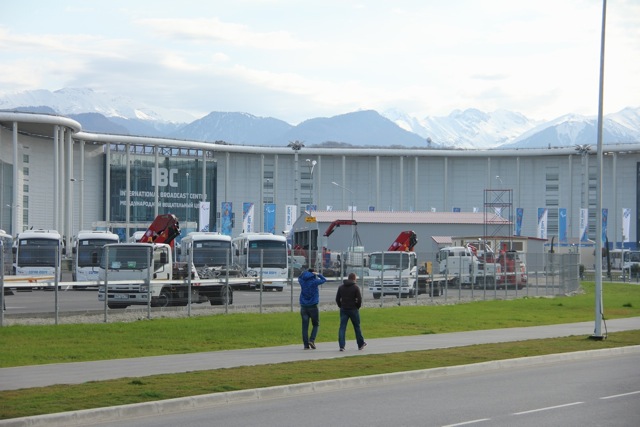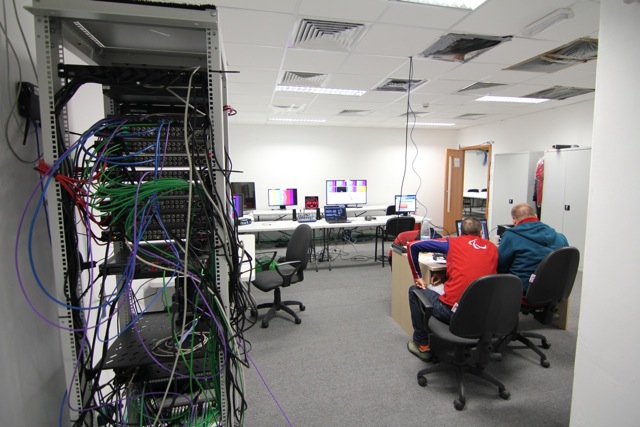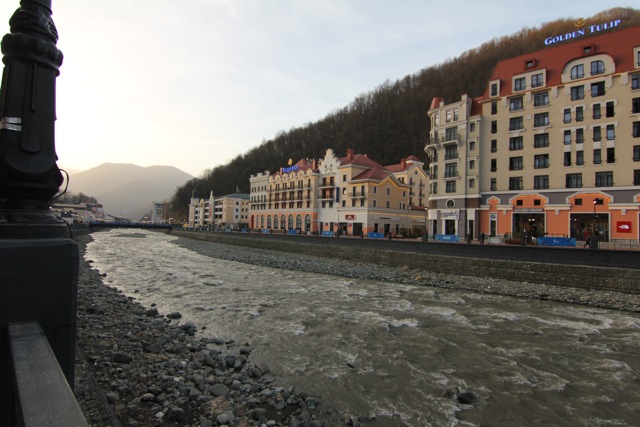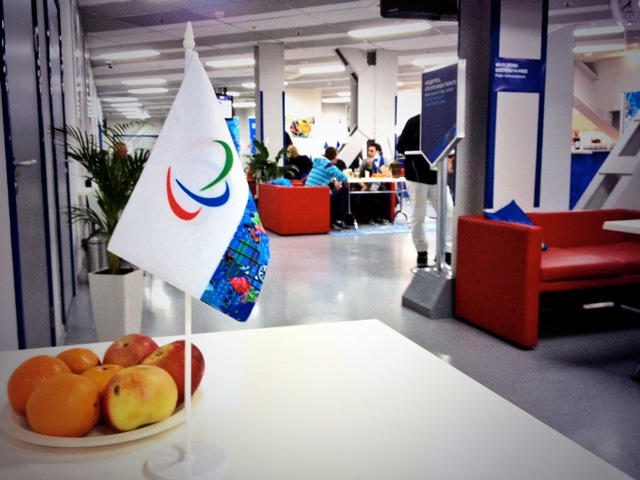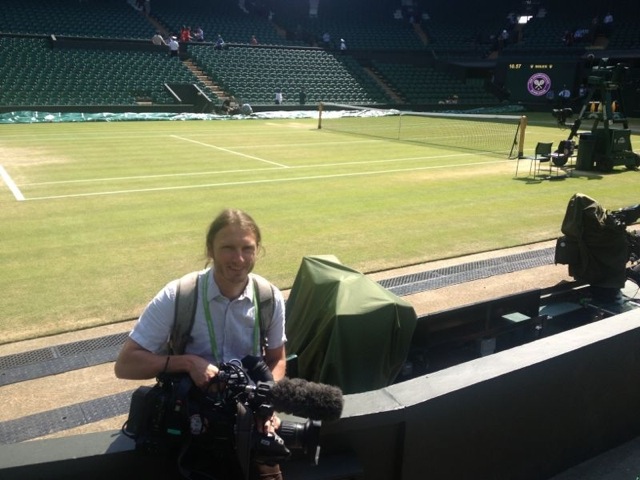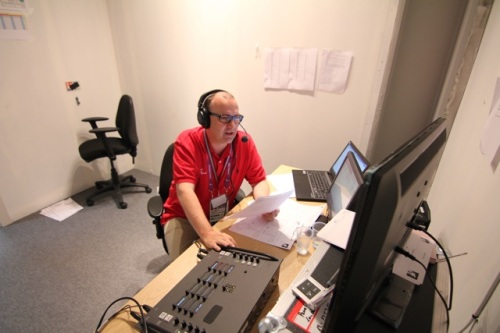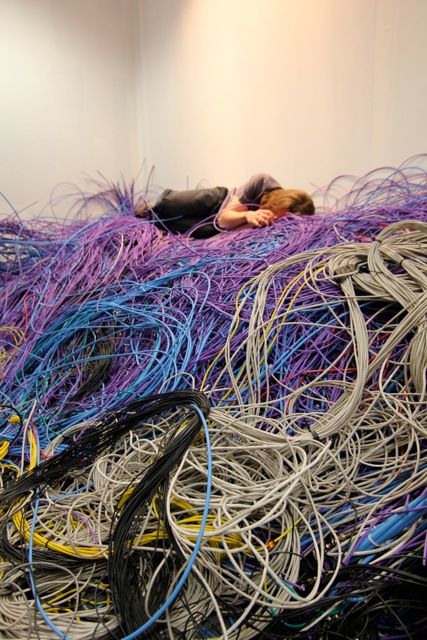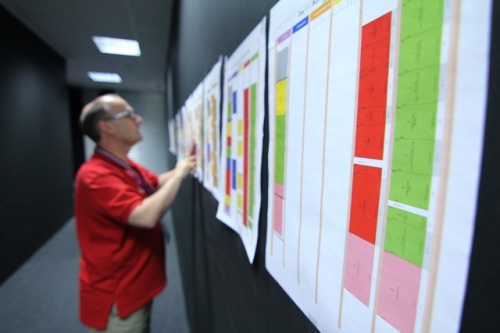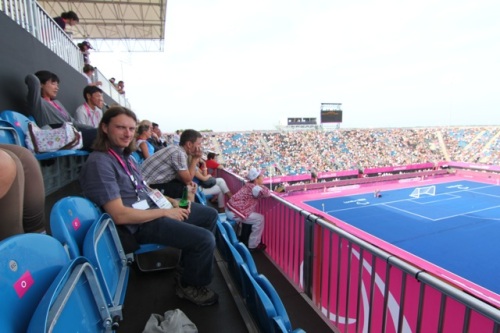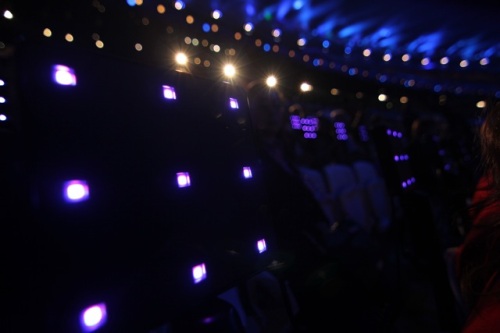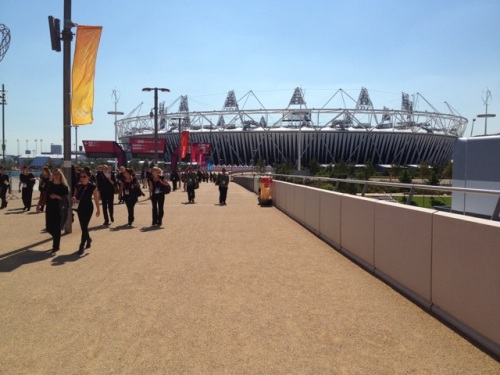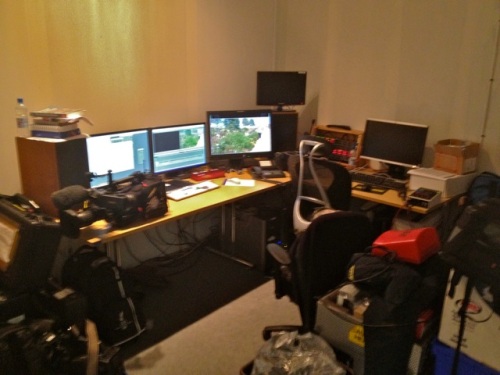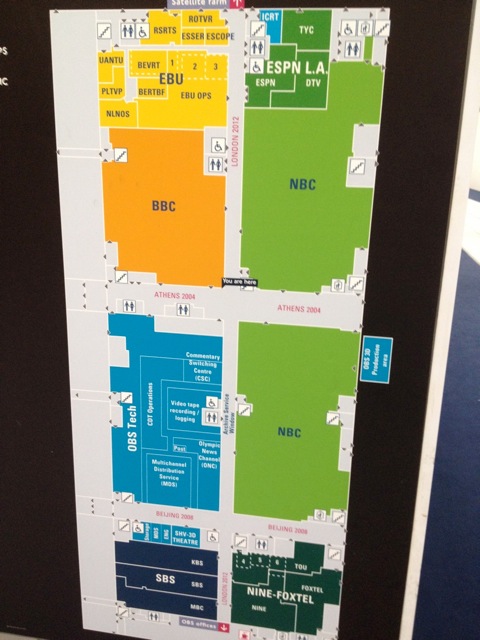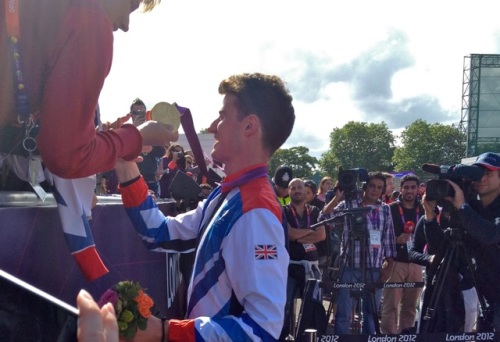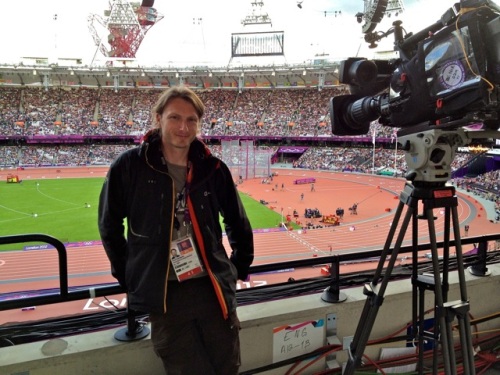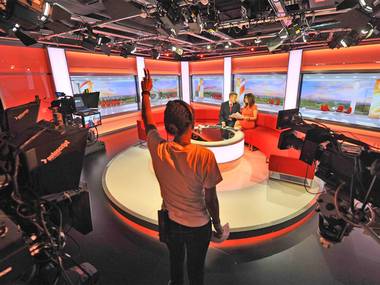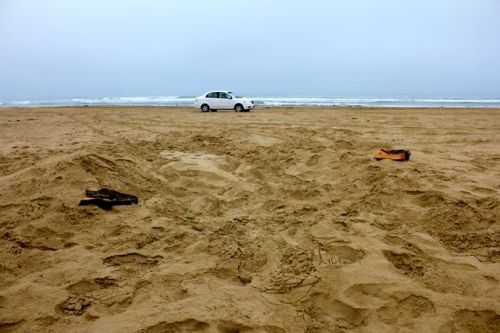
As I walk through a rainy street in South Manchester it suddenly dawns on me that I’m home. It’s taken 3 days. I don’t know what prompted it. Running out of milk, a conversation with family, who cares. I’m back and that’s it. I’m not in Antarctica any more.
Exactly two weeks earlier I was standing in the launch bay of the Ocean Endeavour, a former Baltic sea ferry turned Antarctic cruise ship. It was moored off Neko Harbour, a stunning spot on the Antarctic mainland. You can walk all the way to the South Pole from there if you wanted. We were here for different reasons though: following a team of scientists as they set up remote cameras all over the Antarctic Peninsula.
As far as working as a BBC cameraman goes, this is as good as it gets. It’s a long way from Rotherham Magistrates court – literally! 4 flights and 2 days at sea crossing the Southern Ocean. It’s at the end of this voyage where I’ll start my little diary. Most of it was written on board the ship during the trip. Pics are by my wonderfully talented colleague Vic Gill.
 BBC reporter Vic Gill and myself in Antarctica
BBC reporter Vic Gill and myself in Antarctica
Friday 15th Jan 2016
So that was unpleasant. The Southern Ocean is quite rough! The winds are unimpeded right around the globe at that point on the map and you can feel them through the roll of the huge waves that collide with the ship every few seconds. Vic managed very well but I felt bad. I wasn’t sick, unlike many of the other passengers on board, but I did turn in to a shell of myself. I think Vic asked me if I was OK about 5 times a minute for the whole day. Still, we managed to prepare our camera kit, including all the biosecurity measures ahead of taking it ashore, and I even had lunch and dinner, so I can’t have been that bad.
 Vacuuming all traces of seeds and debris from my camera equipment. Part of biosecurity measures taken by the expedition team.
Vacuuming all traces of seeds and debris from my camera equipment. Part of biosecurity measures taken by the expedition team.
As I crawl into the cabin to go to bed I have an Alan Partridge-style ‘idea for a programme’ – put fat people on ships sailing to and from the Antarctic peninsula non-stop until they reach their desired weight. Possible title – Fat at sea/Land Ahoy/Chunder blunders? Good night.
Saturday 16th January 2016
There couldn’t have been more of a contrast to yesterday. We awake to the soothing sound of the Expedition Leader, the amazingly super cool Alaskan, Solan Jensen, who announces over the ship tannoy, “Welcome to Antarctica’. It’s like Disneyland out there; the sun is shining and the visibility is excellent. It’s the ultimate way for the continent to greet you, and a great way to celebrate reaching the last of the 7 continents of the world (it turns out both myself and Vic have achieved this feat without realising). We have breakfast then quickly prepare for a full day of work following scientists Dr Tom Hart and Hila Levy from University of Oxford. They are heading out to collect memory cards from a variety of cameras which are fixed on penguin colonies, and monitor the birds 365 days a year. After a quick safety briefing we head out on small, fast rubber boats called zodiacs and land ashore at Neko harbour.
 Aboard a zodiac heading shore
Aboard a zodiac heading shore
 Dr Tom Hart and Hila Levy at a penguin monitoring camera
Dr Tom Hart and Hila Levy at a penguin monitoring camera
Penguins are fascinating birds. They are undeterred by the strange human visitors, and carry on doing their thing. We get some beautiful shots of them, and of Tom and Hila setting up their kit, before heading back to the ship. The place is stunning in the sunlight. It’s hard to imagine it being a harsh environment… ever. But that’s what it is most of the year. This bright sunshine is very rare, Tom assures us, and things can change very quickly. I suppose that’s why we are lugging around extra clothing and bivvy bags everywhere.
 Filming a penguin colony in the gloriously sunny Neko Harbour
Filming a penguin colony in the gloriously sunny Neko Harbour
 Gentoo penguin colony at Neko Harbour
Gentoo penguin colony at Neko Harbour
In the afternoon, we head out on another zodiac trip to set up a brand new camera position at Bryde island. Hila’s sense of humour starts to emerge when confronted with the task of collecting penguin guano (poo to you and me); more about that tomorrow.
In the evening, we have to abandon dinner to go to Leith Cove where the tourists are setting up to camp over night. Yes, tourists do get the chance to camp out in Antartica, under the stars in bivvy bags. I’m impressed by the numbers, a few dozen, and by the organisation of the expedition team. They dig toilet igloos and are there to help out in what must be a fairly complicated operation.
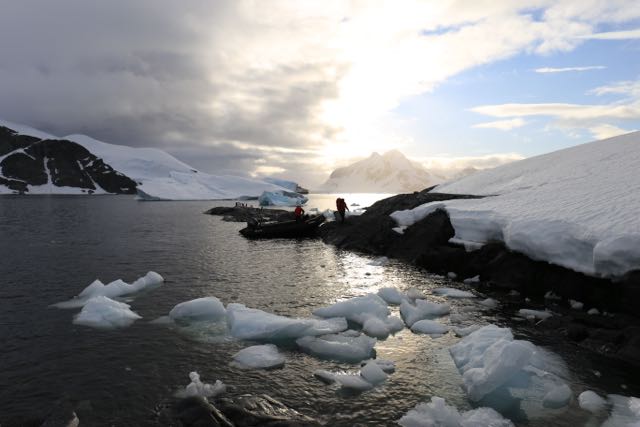 Landing at Leith Cove to set up a time-lapse
Landing at Leith Cove to set up a time-lapse
We move on to take time-lapse shots for the opening of our news piece. There is a huge ‘crack’ as an iceberg splits in two and rolls over in the bay in front of us. It is summer here, so of course the ice is melting. Going close to the edge of an ice sheet is not a good idea as a crack can very quickly lead to a chunk of ice cleaving into the sea. It happens every few minutes meaning the campers behind us will have to get used to the sound. Or not sleep very much.
 Cracking ice sheet at the head of a glacier. The ship is not even half as high as this cliff
Cracking ice sheet at the head of a glacier. The ship is not even half as high as this cliff
As we head back to shore in the zodiac, an Antarctic Petrel decides to fly right above us, tracking the craft at it speeds toward the ship. It’s an amazing sight I’ll never forget. I kept thinking of reaching for my camera to film it but I’m glad I didn’t. Some things are better watched than captured and this was one of them. Truly wonderful. Tomorrow promises to be even better, if that’s possible.
Sunday 17th January 2016
It’s our second day and we are now amongst sea ice in Gerlache straight and the ship is sailing up the Lemaire channel – a narrow strip of water between two vast icy walls which loom out of the low cloud. The bottleneck provided by the channel leads to increased sightings of marine life. A pod of Orca are spotted and soon are right next to us, spouting and surfacing as they feed. Penguins dart in and out of the water and we see seals cruising all around us. As we get further down the channel, the ship suddenly feels tiny and vulnerable. Up ahead is a vast sheet of sea ice blocking our way. At this point myself and most of the tourists around me are thinking one thing: stop and turn around. But instead we ram on through it, using the weight of the ship and some expert knowledge from the captain to break up the ice and sail through. It’s quite a unique experience to see ice, covered in penguins and seals, either side of the ship as you sail through.
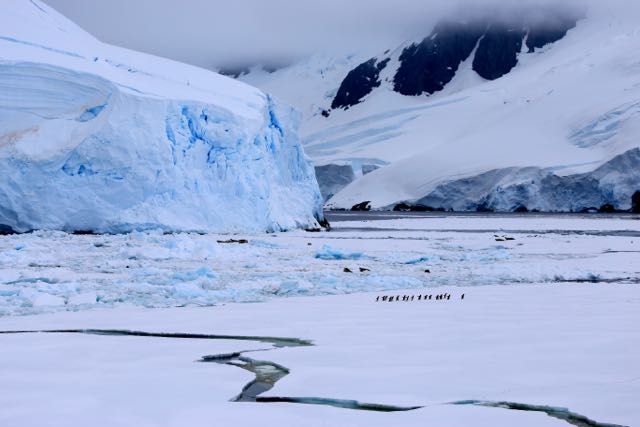 Penguins fleeing from a large crack formed in the ice by the Ocean Endeavour
Penguins fleeing from a large crack formed in the ice by the Ocean Endeavour
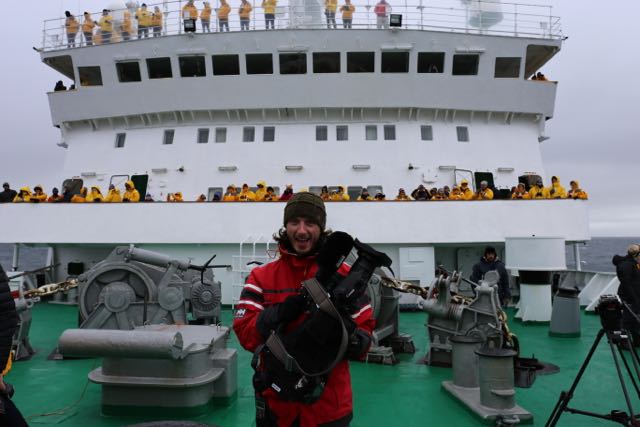 Who’s got the best camera? Me obvs
Who’s got the best camera? Me obvs
Later that day another landing – Booth island. This time we travel light prepared for a hike through the snow. The zodiac drops us off, snow shoes are donned and off we go. The team are setting up more cameras, but also Hila will be taking samples of guano – penguin poo and collect DNA samples. To do this she has to swab the penguins, both adults and their chicks, where the sun don’t shine. Not an easy prospect! There are two methods. Number one: one scientist (Tom) distracts the nesting penguin while the other (Hila) sneaks up behind with a long cotton bud and takes the swab. Textbook! Number two is the trickier prospect of swabbing the chick which sits underneath in the warmth. Tom gently holds the beak of the penguin to avoid a nasty peck, Hila nips in with the swab and they are out of there within seconds. It’s impressive.
 Tom and Hila decide who is today’s lucky penguin in ‘Swab rules’
Tom and Hila decide who is today’s lucky penguin in ‘Swab rules’
We’re soon back on the ship, fed and watered. The day ends with an amazing sunset. To get the really good shots, any camera operator or photographer will tell you to wait for sunset or sunrise. I usually prefer sunset, as I don’t like getting up in the morning. Trouble is, this far south in the Antarctic, the sun sets REALLY late. Midnight to be precise. And the process takes an age. So instead of having the usual 5 minutes of beautiful light and the mad dash to get as many shots in that window as possible, you can take your time. A photographer’s dream! That night we probably have the best part of an hour of phenomenal light with the most wonderful colours. And in a place like this it takes your breath away. I hope we can do it justice on film.
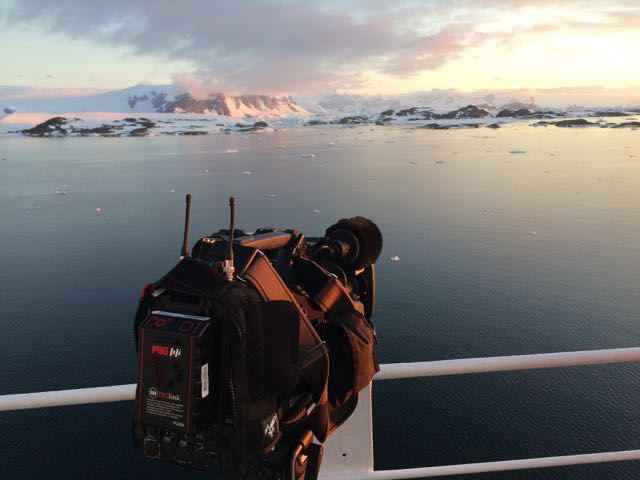 Antarctic sunset last AAAAGEESS!
Antarctic sunset last AAAAGEESS!
Monday 18th January 2016
I shouldn’t have had a few beers last night whilst waiting for the sun to go down. The soothing voice of Solan over the ship intercom at 0700 isn’t as delightful as other mornings. And the news that we are heading out to shore early isn’t what I wanted. Vic, though, is up and at ’em. I don’t know where she gets the energy but, since she has it and is a very good video journalist/camerawoman, why not make use of her skills! I stay on board and film from the ship whilst Vic, Tom and Hila disembark on the zodiacs and do science. Nice.
They head off to a spot called the Yalores to check on a camera which has the ability to relay images via satellite: the next innovation which could lead to live images of penguin colonies online. Meanwhile I get a few cups of coffee and get the shots of them speeding to and from the ship which will be perfect for our documentary. The great thing about this shoot is everyone is wearing the same clothes every day. Red jackets, snow pants, same hats/gloves/sunglasses/boots. It’s a dream for continuity.
 Vic’s outfit for the trip. Nice purple hat
Vic’s outfit for the trip. Nice purple hat
In the afternoon we head to civilisation…Antarctic style! Vernadsky research base is a Ukrainian research station which used to be British (Faraday station). The science geeks amongst you will know that this is the place at which the hole in the ozone layer was discovered. We jump ashore and head in. We are immediately greeted by some friendly Ukrainian scientists doubling as bartenders. Vic has a glass of wine but is sure, despite their flat denials, that there must be some of their famed vodka kicking around. Tourists enter and began hoovering up tat from the world’s most southerly gift shop. You can buy postcards with stamps and post them from here (keep an eye out, mum). The scientists even carve their own penguin fridge magnets during the long, boring winters. I’m having one of those.
 Vernadsky research base on the Antarctic peninsula
Vernadsky research base on the Antarctic peninsula
We interview some of the scientists and are soon led into the back of the base to have a look at a piece of history. Up a ladder and into a loft we are led into the bedroom of Sascha. Perched barely a metre above his bed is a huge white machine. Yes… this is the the machine which detected the hole in the ozone layer!…In some Ukrainian guys bedroom. Unbelievable.
 Me, Vic and Sascha with a piece of 80’s history. The machine that led to the discovery of the hole in the ozone layer.
Me, Vic and Sascha with a piece of 80’s history. The machine that led to the discovery of the hole in the ozone layer.
Tuesday 19th January 2016
With so much good footage in the bag, we decide to spend the morning editing. Last night we went to a place called Moot Point (yes, really). It was the most remote penguin colony so far, and getting there had involved weaving through masses of sea ice and icebergs in a zodiac. It was truly impressive navigating from Solan, who was driving us, and great fun. I have brought along a DJI Osmo camera for this trip, and it proved ideal for this particular foray. It’s basically the gimbal camera that is usually attached to a drone. But this you can hold in your hand. It gets you rock steady shots from a moving platform, like a zodiac, and is really easy to grab and use.
 Filming with the DJI Osmo – perfect from a moving boat… but not very waterproof!
Filming with the DJI Osmo – perfect from a moving boat… but not very waterproof!
 The best edit suite in the world?
The best edit suite in the world?
We edit a couple of short features for the BBC News website with a unique view over Antarctica. I then use a combination of a BGAN (portable satellite dish) and the ship’s internet connection to beam the pieces back to London. They are due on air before we get back to Argentina so success is vital. Not all goes well though. I have some trouble successfully pointing the BGAN dish for a couple of reasons. One, the satellite I’m looking for is at only 8 degrees from the horizon, meaning any small hill (or glacier) can get in the way, Second, the anchored ship is constantly rotating very slowly, meaning the satellite position is changing. It’s tricky. I’ve read stories about a SKY news crew realigning the BGAN dish from the back of a moving truck as it steamed into Benghazi during the Libyan uprising. God knows how they managed to get that live signal out. I have some success but I eventually give up on my slowly moving cruise ship after an hour or so and head in out of the cold.
 Sending video via BGAN – Let’s hope we don’t hear the ‘abandon ship’ alarm in the next ten minutes
Sending video via BGAN – Let’s hope we don’t hear the ‘abandon ship’ alarm in the next ten minutes
Wednesday 20th January 2016
On the journey out from Buenos Aires to Ushuaia on the southernmost tip of Argentina, Vic and I had watched ITV’s two part drama ‘Shackleton’. It’s a Sir Kenneth Branagh special, full of grandiose lines which we spent the entire trip shouting at each other. “Take only what you need to survive!” is uttered pretty much every time we head out of the kit room to board a zodiac. Trouble is, this trip is a world away from the hardships suffered by those early Antarctic pioneers like Shackleton. We often wonder what he would make of all this tourism malarkey; wealthy American retirees sipping brandy in cocktail lounges a few hundred yards from where the icy continent once applied its terrible regime of wind and snow upon weary explorers. In fact, unbeknown to us at the time, a British explorer, Henry Worsley, lay exhausted in his tent, unable to continue his solo quest to cross the continent. He would later die in hospital in Chile. He was 30 miles from achieving his goal and becoming the first man to do so. That is the terrible reality of this place.
But the weather is kind to us, and so nothing is really that hard on this trip. I’d like to pretend it is, to make this whole experience sound more intrepid, but to be honest, the most daring feat of the entire trip is what we embark on today. We are jumping in the ocean.
The water is 0.1 degrees centigrade, and there is ice floating all around us. Vic goes first (for the telly) and dives in like a pro! It’s a proper dive too, feet tucked together, barely a splash. It makes a great sequence for our film but she’s set a high bar and I’m now being egged on by the expedition staff to put the camera down and go get my swimmies. I reluctantly agree.
After queuing (yes, queuing) behind around 60 eager tourists who clearly aren’t put off by the shrieks ahead of them, it’s my turn. My internal justification is that I have to film another point-of-view angle of Vic’s elegant dive to cut into our sequence. GoPro strapped to my back, I dive off the zodiac gangway and into a freezing pit of needles. My arms and legs immediately seize making me thankful for the leash which the expedition crew have attached around my waist. Slowly the feeling comes and and I have a brief swim before clambering back out. A towel has never been so inviting.
 Tom Daley eat your heart out
Tom Daley eat your heart out
Thursday 21st January 2016
We are heading home. It’s hard to bear but we have work to do so we can’t dwell on the wall of ice disappearing away from the bow of the ship. The edit suite is set back up and we cut our package for the BBC News at Ten. The cabin doubles as a voice over booth complete with state of the art sound proofing.
 Vic uses my high tech VO booth in the cabin
Vic uses my high tech VO booth in the cabin
More short film edits follow, but as we enter open sea past the South Shetland Islands, my ability to stare at a laptop screen diminishes, and I’m soon taking it easy. Vic on the other hand just cracks on. That’s my girl! She has a number of radio pieces to produce so she gets on with that. I occasionally surface to play piano in the lounge (did I mention the ship has a grand piano? No?) which actually helps a lot. I think it must be down to the fixed horizon of the keyboard. I offer the odd word of encouragement and advice but I’m mostly useless. Hold it together Cheeseman!
 Examining our journey through the Peninsula
Examining our journey through the Peninsula
Friday 22nd January 2016
I think I’m over it! I have my sea legs. It’s wonderful. I can work. We get to work editing a short film which will be shown at the ‘end of expedition’ presentation later. It’s the least we can do for the crew who have been fantastic to us. They’ve been really helpful and accommodating to all of our unreasonable ‘media people’ requests. Out comes the music library, and it’s a great fun to look through our pictures and cut a piece together. It also helps us plan the rest of our output which we will be putting together in Buenos Aires once we return there in a couple of days.
In the evening, Vic does a little presentation to the tourists whilst I sit at the back of the room. I love moments like this when you see your work displayed in front of an audience. I spend my time watching the people whilst they watch the film, looking for reactions, moments of boredom or engagement. It really helps cement in my mind some of the sequences that will be in the final documentary. But as Vic says later, mostly people just like the parts with either themselves in… or fluffy animals.
The Quark Expedition/BBC production we show at the end of the trip
Before we know it, the shore of Tierra Del Fuego comes into view and we know it’s over. Gutted.
So that’s it. Probably the best trip I’ll ever do with my job? I can’t think of many places that would top it… The moon? It’s right up there.
 Photos by Vic Gill (@Vic_Gill on twitter), Dr Tom Hart, Hila Levy, myself and a random tourist (thank you!)
Photos by Vic Gill (@Vic_Gill on twitter), Dr Tom Hart, Hila Levy, myself and a random tourist (thank you!)
Here are some links to the films we made.
Capturing the world’s longest sunset
http://www.bbc.co.uk/news/science-environment-35382590
Scientists set up penguin CCTV
http://www.bbc.co.uk/news/science-environment-35382591
Capturing a year in the life of a penguin colony
http://www.bbc.co.uk/news/science-environment-35382325
Vic’s radio piece for BBC Inside Science



